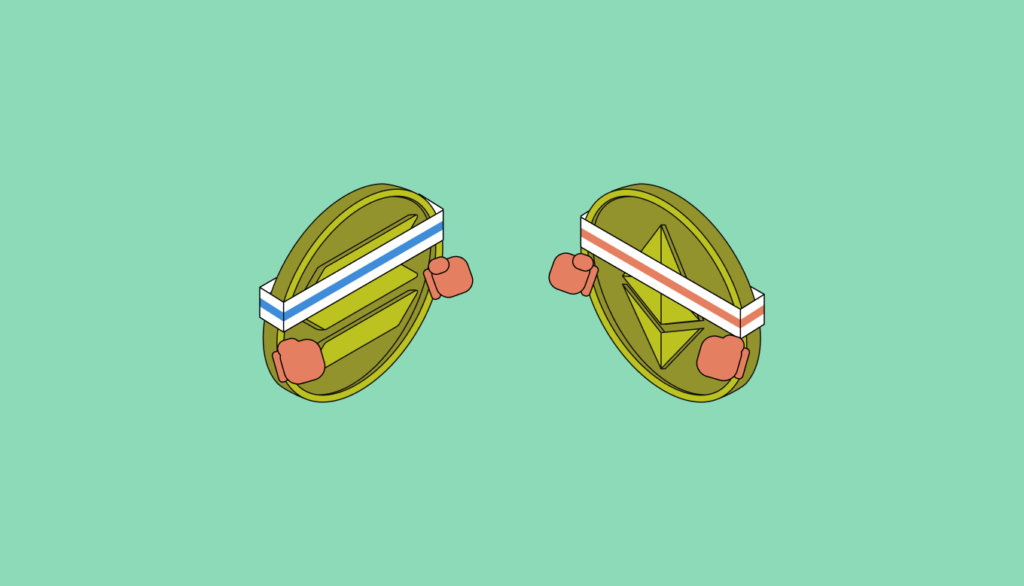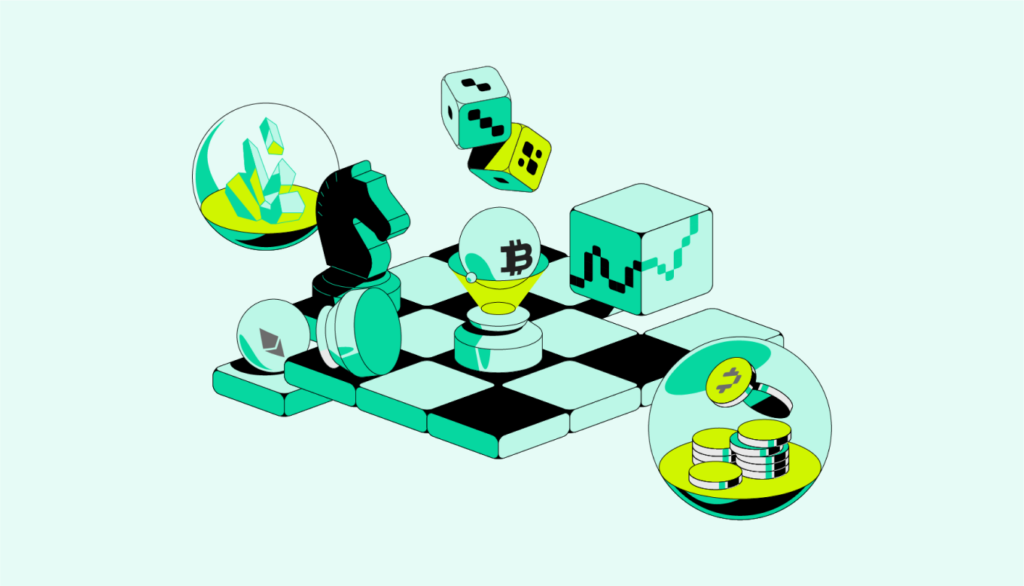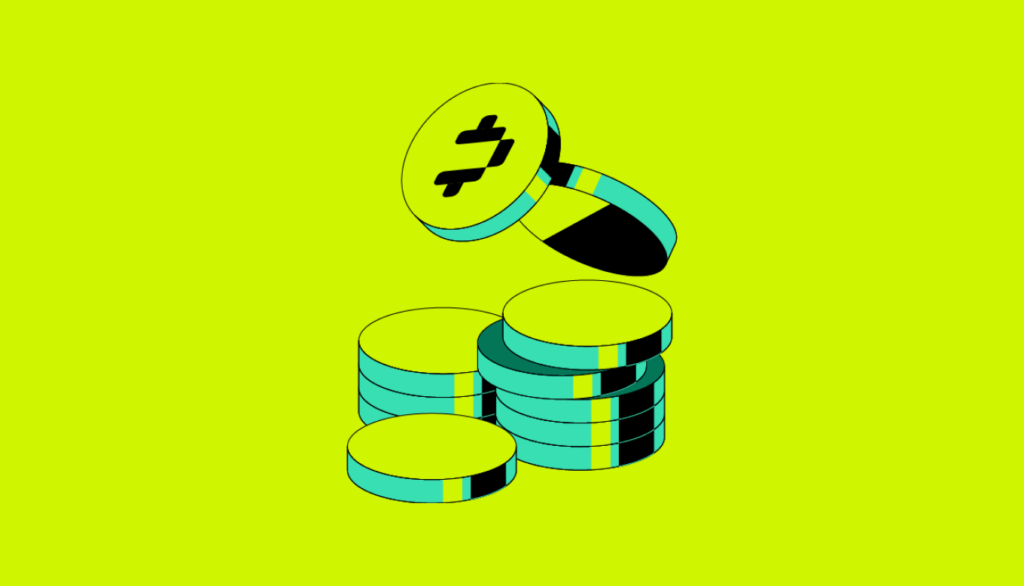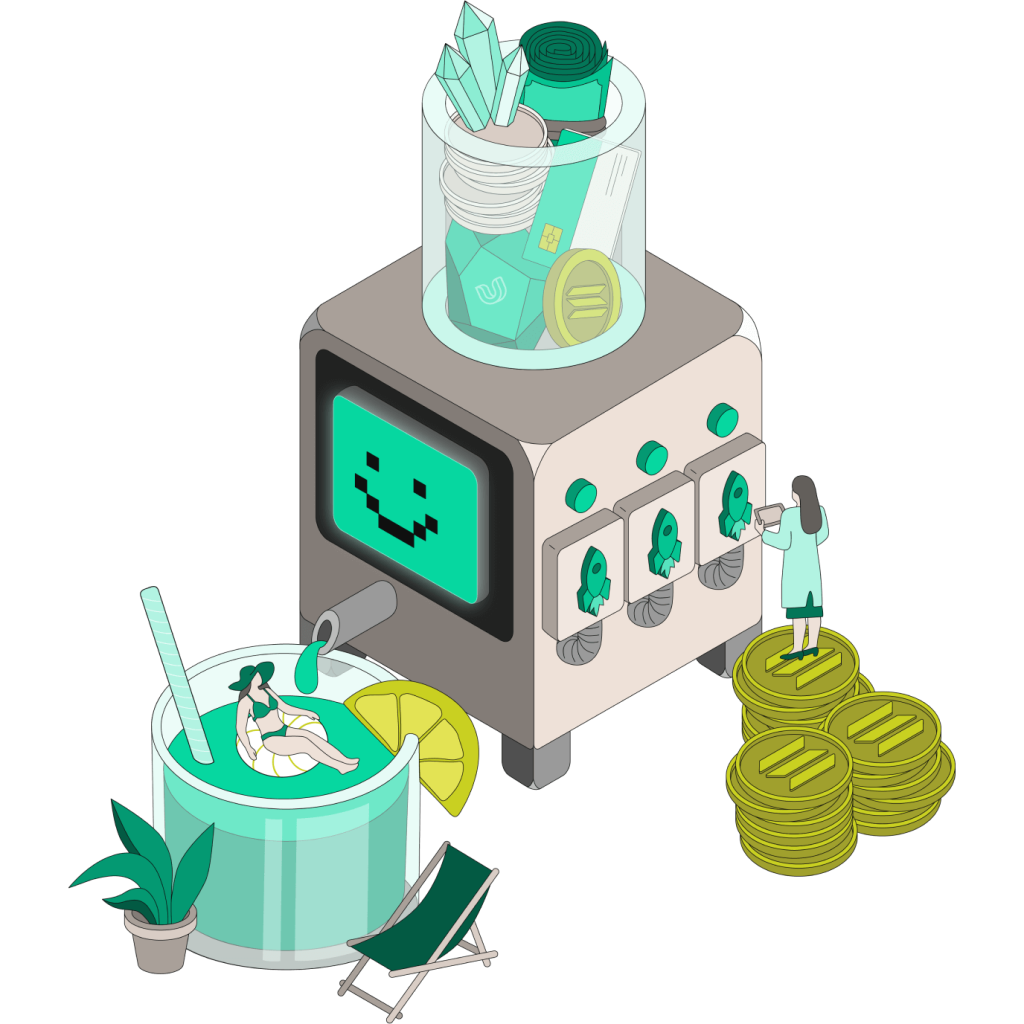It’s time to get down to the essential technology underlying crypto, NFT and DeFi – the blockchain network. Initially, Ethereum rose to be the central platform for so many dApps. But in 2017, software developer Anatoly Yakovenko proposed a new decentralized ledger model that would additionally push forward more innovation. Solana debuted in 2020, proposing a Proof-of-History network, using timestamps to define the next block in the chain. This was rather opposed to the initial Proof-of-Work, and the latter Proof-of-Stake upgrade of the Ethereum chain after the recent Merge.
Right from the beginning, Ethereum was, and still is, one of the major blockchains by size and number of hosted dApps. But Solana came with a new consensus model, some of the fastest transaction speeds and a perfect environment for NFTs. This way Solana climbed into the top 10 cryptocurrencies, with SOL currently hovering at #9 with a market cap of more than $11 billion. Let’s talk more about the two blockchain networks and what the future holds for both of them and for you as a user.
Zoom In on Ethereum
Vitalik Buterin founded Ethereum with additional participation from Gavin Wood, Charles Hoskinson, Anthony Di Iorio and Joseph Lubin. The chain debuted in the summer of 2015, allowing anyone to deploy permanent and immutable decentralized applications onto it. It soon became the go-to platform for all kinds of DeFi applications, providing a broad array of financial services without the need for typical financial intermediaries. Moreover, many other projects utilize the ERC-20 standard of the Ethereum chain and have used the platform for initial coin offerings.
As far as the programming language goes, Ethereum uses the custom-built Ethereum Virtual Machine (EVM). Its smart contracts are written primarily in custom languages such as: Solidity (inspired by C++), Viper (Pythonic Language), Yul/Yul+ (intermediate language to EVM) and Fe (based on Rust and Python).
Ethereum
- Gas Fees – ~$0.00000390
- Transaction Speed – 30 TPS
- Block Size – 70 transactions
- Market Cap – $156,557,527,327
- Network Size – $53.21 billion Total Value Locked
- DeFi Ecosystem – approx 3000 dApps
- NFTs – $10 to $150 cost of minting per NFT
Zoom In on Solana
While Ethereum prioritized decentralization, Solana focused more on throughput, managing to provide a much faster transaction speed of 50,000 TPS. For reference, Visa – the world payments processor, can handle 65,000 TPS. However, Ethereum is looking to drastically improve their TPS. After the Merge and other future scheduled updates, the ETH chain aims for TPS speeds in the 6 digits.
As blockchain and crypto were getting more and more traction, it became obvious that scaling would soon be a problem for Ethereum. Solana came with an increased bandwidth and a highly functional open-source blockchain that would solve the scaling impediments.
Solana is using the more well-known programming languages like C, C++, and Rust. Its architecture is more complicated than Ethereum and supports multithreading (the ability of a program to enable more than one user at a time). It also uses the Gulf Stream transaction forwarding mechanism to run its programs instead of mempools.
Solana
- Gas Fees – ~$0,0000013
- Transaction Speed – 50,000 TPS
- Block Size – 20,000 transactions
- Market Cap – $11,274,869,030
- Network Size – $2.54 billion TVL
- DeFi Ecosystem – approx 400 dApps
- NFTs – $0.04 to $0.12 cost of minting per NFT
Ethereum vs Solana – Pros & Cons
Right from the start, Solana focused on speed and scalability. Being an open-source, high-performance and permissionless blockchain, it can process more transactions per second than Ethereum. Also – it manages to keep transaction costs significantly lower.
On the other hand, Ethereum was designed for hosting decentralized apps and organizations. The network relies heavily on smart contracts, which are computer programs that facilitate transactions on the blockchain.
As far as security goes, both Solana and Ethereum experienced some hacks in the past. However, Ethereum suffered harder hits, mainly due to the major Axie Infinity hack in which 173,000 ETH was stolen.
As previously said, one of the main advantages of Ethereum is its decentralized nature, being second only to Bitcoin. The network also benefits from the largest developer community in the world, bigger than Bitcoin. Having so many developers gives Ethereum wind in its sails for an even bigger adoption. The popularity of the network also increases with its ability to connect apps to hundreds of other existing protocols. By connecting to the existing infrastructure, innovative financial products and DeFi apps can be built and launched in a matter of weeks.
It’s important to know that Solana is a very fast, secure, and scalable blockchain network. It offers a perfect open infrastructure needed to further develop the global blockchain adoption. Solana is also one of the best networks for NFTs. The fast and cheap transactions, as well as the low NFT minting cost make it a major Web3 player. Another important advantage is the fast streaming proof of replication that enables the storage of a large distributed ledger.
Choosing the Right Blockchain
Choosing the right blockchain network will of course depend on the applications you are interested in. Both chains have their pros and cons. But there’s no doubt that Solana is a fast rising technology hub and one of the few networks to actually compete with Ethereum.
Solana signaled the world that we’re entering in the age of fast, cheap and eco-friendly blockchain networks. Today, many other decentralized networks aim for the same standard in performance. A particular area where Solana shines is the hosting of DAOs (decentralized autonomous organization). Because of low transaction fees, having all DAO activities on-chain translates into affordable, secure and fast operations.
Did you know that one of the most promising dApps recently established on the Solana blockchain is now offering premium access to Web3 investment? By joining the Unique.vc platform, you can quickly start investing as part of a syndicate or a VC fund and back promising web3 startups with ease. The platform offers a safe investing environment and the best tools for governance, treasury management and on-chain decision-making.
What’s your experience with the two blockchain giants? Join the conversation on Unique.vc’s Discord and Telegram channels for a fruitful debate with like-minded people and let us know!




